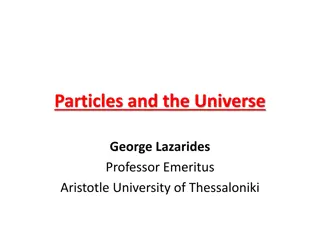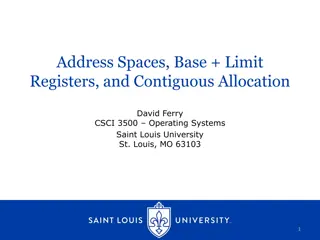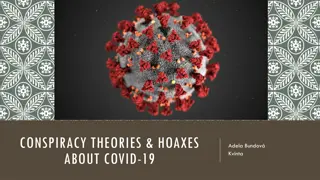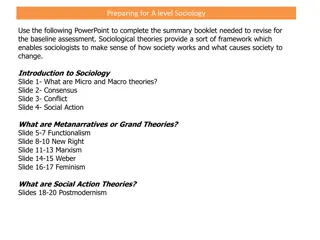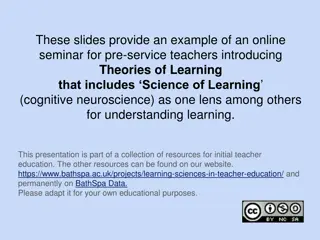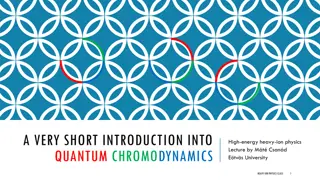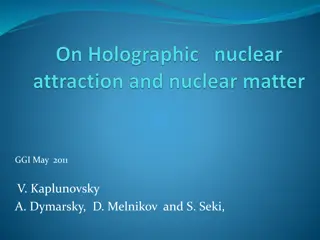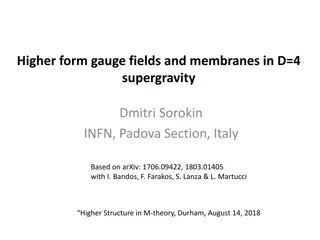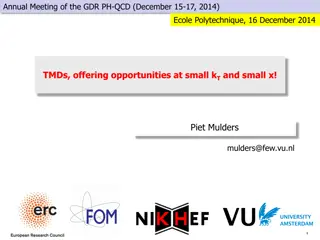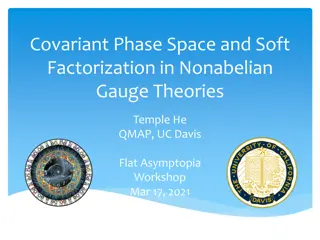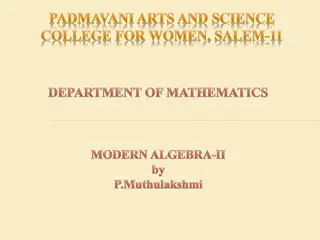Exploring Moduli Spaces of 3D N=4 Quiver Gauge Theories
Study the rich moduli spaces and symmetries in 3D N=4 quiver gauge theories, analyzing superpartners, scalar fields, and the natural splitting of moduli space into Coulomb and Higgs branches. Gain insights into SUSY theories, duality, and potential applications in string theory and geometry.
Uploaded on Aug 22, 2024 | 0 Views
Download Presentation

Please find below an Image/Link to download the presentation.
The content on the website is provided AS IS for your information and personal use only. It may not be sold, licensed, or shared on other websites without obtaining consent from the author. Download presentation by click this link. If you encounter any issues during the download, it is possible that the publisher has removed the file from their server.
E N D
Presentation Transcript
Moduli Spaces of 3d N=4 Quiver Gauge Theories Kirsty Gledhill, Imperial College London Supervisor: Prof Amihay Hanany
3d N=4 supersymmetry Extension of Poincare symmetry Every particle has a superpartner Representations of the supersymmetry algebra are called supermultiplets 3d N=4 has 8 supercharges Study gauge theory only representations are vectormultiplets and hypermultiplets
Quivers (8 supercharges) Theory fully categorised by: Gauge group Matter content How the fields of the theory transform under gauge and global symmetries Instead of , can encode in a quiver:
Moduli space of vacua Space of field configurations that minimise the potential, up to equivalence Example: = 1 ? ?,? = ?2?? +1 4??????+ (???) ??? ? ?,? , 2?(?? )2 Picking a vacuum state symmetry breaking Higgs mechanism
Moduli spaces of 3d N=4 gauge theories SUSY superpartners more scalars richer moduli space We have a natural splitting of the moduli space into 3 different parts: The Coulomb Branch : all VEVs of scalars in h.m s are zero The Higgs Branch : all VEVs of scalars in v.m s are zero Mixed Branches: scalars in both h.m s and v.m s can have non-zero VEV Quiver picture:
Summary Representations of 3d N=4 gauge = vectormultiplets and hypermultiplets Can depict in a quiver = space of gauge invariant scalar VEVs of the theory Split into Coulomb and Higg s branch, and study using quiver
Motivations and outlook To learn about higher dimensional and more complicated theories via dualities. Probing SUSY theories establish techniques that could be applied to other theories. There is an interpretation of these theories as the low energy world-volume theories of branes in string theory. So can learn about possible brane configurations in string theory. Learn about new kinds of geometrical structures: building a bridge between physics and geometry.
Thank you for listening! Any questions? REFERENCES: [1] Michael R. Douglas and Gregory W. Moore. D-branes, quivers, and ALE instantons . In: (1996). arXiv: hep-th/9603167 [2] S. Benvenuti, A. Hanany, and N. Mekareeya, The Hilbert Series of the One Instanton Moduli Space, JHEP 06 (2010) 100, arXiv:1005.3026 [hep-th]. [3] Stefano Cremonesi, Amihay Hanany, and Alberto Zaffaroni. Monopole operators and Hilbert series of Coulomb branches of 3d N=4 gauge theories . In: JHEP01(2014), arXiv: 1309.2657



